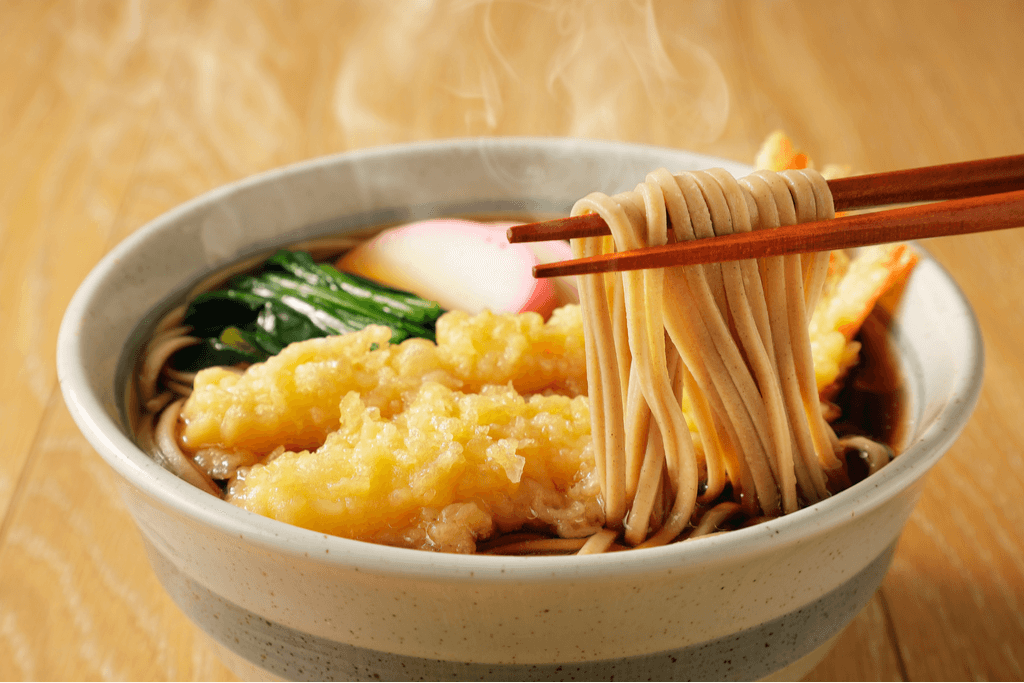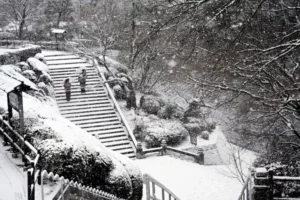A traditional noodle dish from the Edo period (1603-1867), soba (Japanese buckwheat noodles) has quietly maintained its popularity throughout Japan’s long culinary history. Today, soba is the preferred noodle of choice for Tokyoites, with many types of soba dishes popping up in Tokyo and around the country. Let’s check out what soba has to offer!
Table of Contents
ToggleWhat is Soba?
Soba is a thin, straight noodle made from buckwheat flour, giving it a signature brownish-gray color. Once a casual meal for the people of Edo (old Tokyo), soba is still easily accessible.
Shops, from fast food chains to specialty restaurants, are found all over Japan, while supermarkets always have dried soba noodles and mentsuyu (Japanese noodle soup base) available for home cooking. Some stores even have fresh noodles and instant soba noodles in stock.
Like all great foods, soba has evolved and taken on regional and culinary variations. In the first part of this two-parter series, we’re going to look at some of the more famous types of soba dishes out there.
Different Kinds of Soba
Zaru and Mori Soba
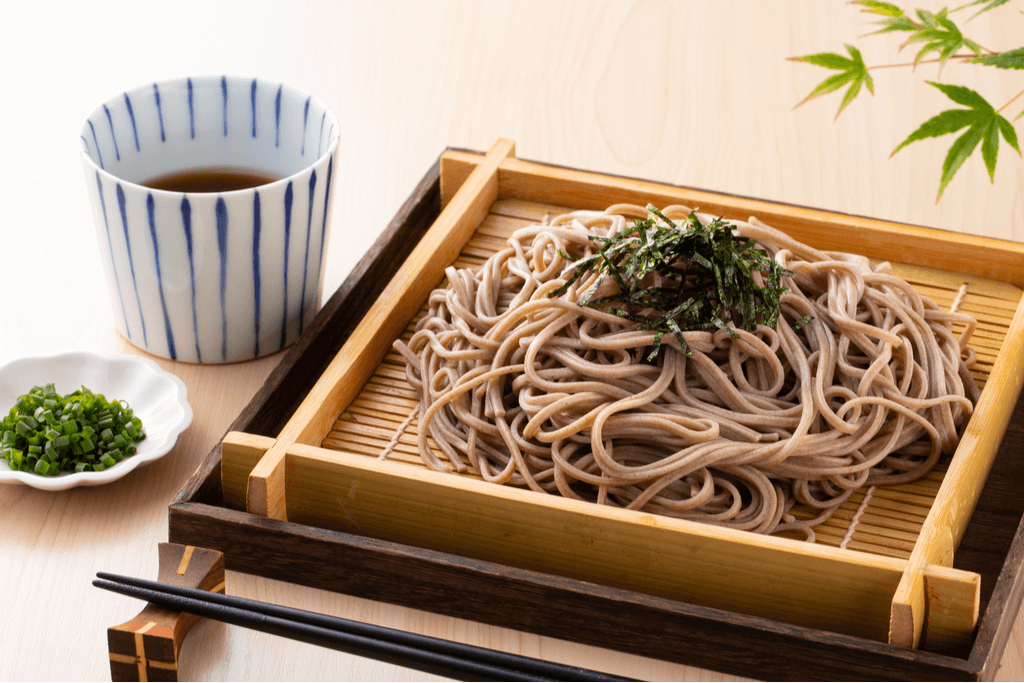
Perhaps the simplest way to prepare a soba dish, soba noodles that do not use any special ingredients are called zaru soba. Chilled soba noodles are topped with seaweed sprinkles, placed onto a bamboo tray called a zaru, and served to the customer alongside a hot or cold dipping sauce (tsuyu).
The difference between zaru and mori soba is the container the noodles are served in, the richness of the noodles, and the presence of seaweed on top of the noodles. Mori soba is not served with seaweed.
Looking to experience as many of Japan’s unique flavors as you can? Check out Sakuraco. Sakuraco sends authentic Japanese snacks, sweets, teas, and tableware from local Japanese makers right to you. Perfect for trying all Japan has to offer!
Kake Soba
Kake soba is another simple way to prepare a soba dish, with soba noodles being boiled and placed into a bowl with hot soup with a sliced scallion garnish. With how simple this dish is, there is no way to hide any mistakes made when preparing the dish. As a result, some restaurants stick to a regimented recipe.
Kake soba is also a popular way to eat soba during the cold season. This is usually the base for many types of soba dishes, with new types just introducing toppings like yuzu (Japanese citrus).
Kitsune Soba
Kitsune (fox) soba takes its name from the fried tofu used as a topping for this soba dish. In the past, people often believed fried tofu was a favorite of the god Inari’s animal messengers, the fox. Another theory comes from the fact that the color and shape of fried tofu resembles a fox.
Kitsune soba is made by putting seasoned fried tofu on top of kake soba. While there may be some regional variations, the fried tofu is usually prepared by boiling it in hot water before seasoning it with sugar, soy sauce, and mirin to make it sweet and spicy.
In Osaka, this is referred to as tanuki (raccoon dog) soba.
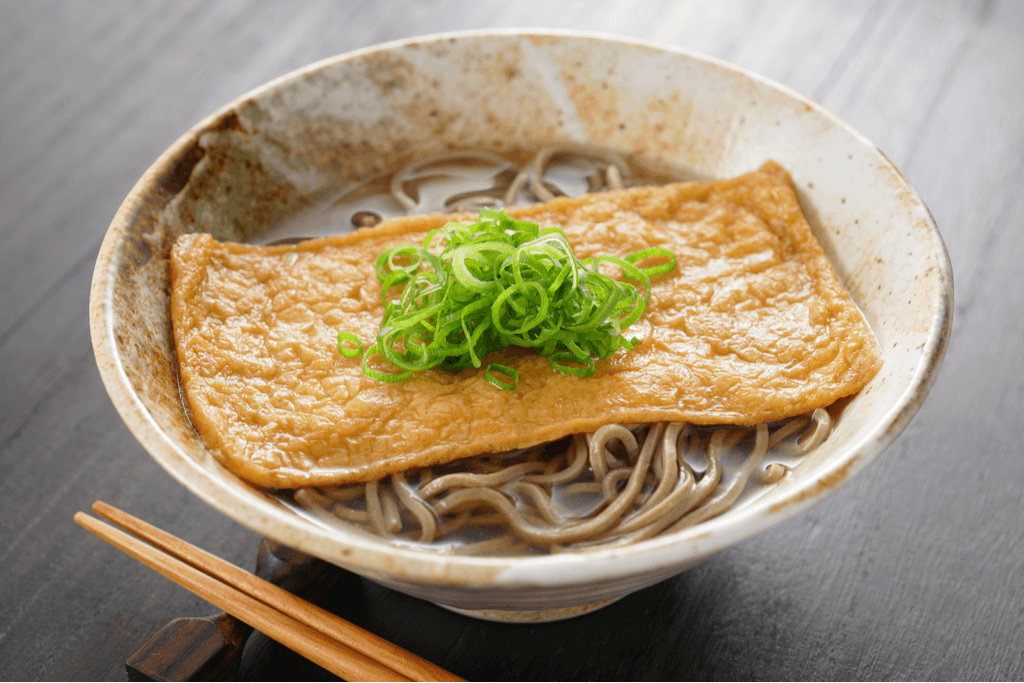
Tsukimi Soba
Tsukimi (moon-viewing) soba is kake soba topped with raw egg. Named for its appearance, the round shape of the yolk resembles the moon in the sky. Overtime, the egg slowly poaches within the hot soup.
Tempura Soba
Tempura soba originally used chopped scallops and shrimp kakiage (deep-fried veggie fritters) as a topping over hot kake soba. These days, traditional soba shops usually use two pieces of shrimp tempura.
In recent years, vegetable and other seaweed tempura are also popular. Kake soba with kakiage using Japanese seasonal vegetables is still a popular choice.
Tanuki Soba
Similar to tempura soba, tanuki soba’s name comes from the Japanese word for “raccoon dog.” In Japanese folklore, the raccoon dog is often seen as a trickster. This soba is served as kake soba with a layer of tenkasu (tempura bits) on top of the noodles and soup. Since it is only the remaining fried bits of the tempura batter, restaurants “trick” their customers with this style of soba.
In Osaka, this is called haikara soba.
Tororo Soba
Also known as yamakake (mountain kake) soba, tororo soba is kake soba topped with pureed yamaimo (mountain yam). This species of mountain yam is known for its thick consistency. The pureed mountain yam is often mixed with other potatoes and egg whites to maintain its color and is often served with raw quail eggs.
Nanban Soba
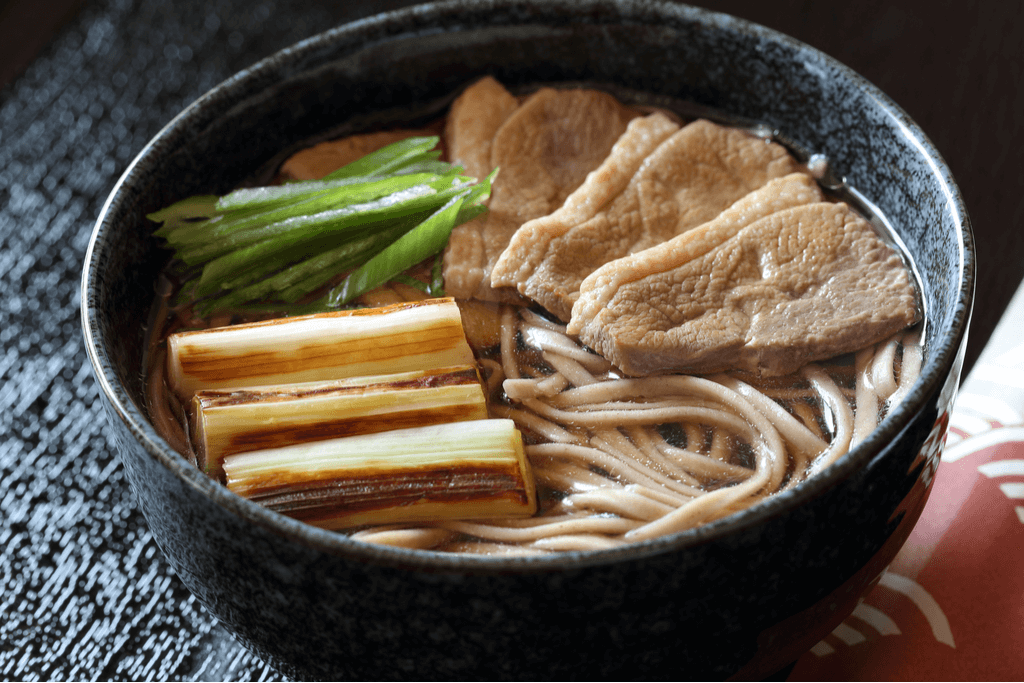
Nanban soba refers to soba served with duck meat and green onions in hot soup. It is said that the Nanban people who came to Japan during the Edo period liked green onions and ate them to stay healthy. Nanban soba may also be made with chicken, beef, or pork meat.
There is also a soba variation of the famous curry nanban udon (thick wheat noodle) dish, featuring curry powder in hot soup, thickened with potato starch, and topped with duck meat and green onions.
Want to get informed about the ramen vs. udon vs. soba debate? Check out this TokyoTreat blog!
Sansai Soba
This soba uses edible wild plants that are boiled in water as the main topping. Recently, more restaurants use pre-packaged packs instead of fresh, foraged vegetables.
Nameko Soba
This is kake soba with nameko mushrooms as the main toppings. These mushrooms are small and amber-brown with a slightly silky coating. When used as a soba topping, they are often combined with grated white radish. This soba was originally eaten in regions where nameko mushrooms were naturally harvested like Yamagata Prefecture and the Tohoku or northern Kanto regions.
Ankake Soba
This is kake soba with soup thickened with potato starch. Grated ginger can also be used as a condiment to help cut through the very rich taste.
Korokke (Croquette) Soba
This soba is served with a deep-fried croquette in the soup. People say it originated from a restaurant in Asakusa during the Meiji period (1868-1912). However, the croquettes were different from modern ones and made of chicken meatballs instead of potatoes.
Today, many standing soba restaurants offer this style of soba, with many using frozen croquettes. However, some chains may use croquettes with a curry flavor.
Regional Specialties
Wanko Soba (Morioka Prefecture)
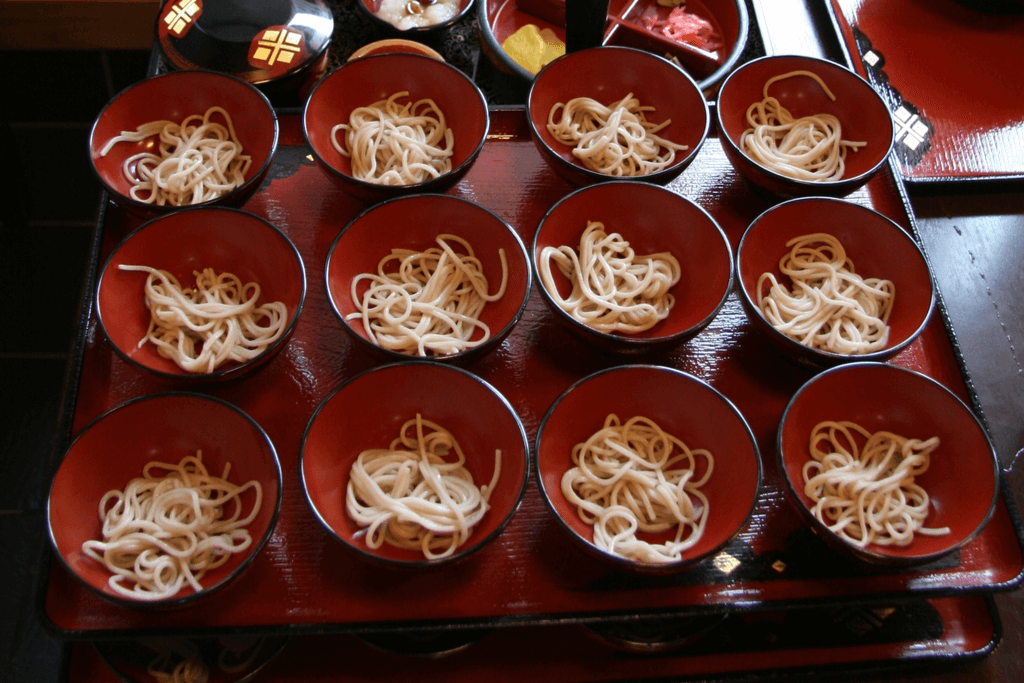
Although not exactly a variation of soba, wanko soba refers to wanko bowls, the small bowls shops use to serve their customers. Although the portions in the bowls are barely enough for a mouthful, wanko soba gained online popularity through its famous eating challenges.
These challenges see customers attempting to eat hundreds of bowls of soba in a limited period of time. Customers get some assistance via a variety of condiments for their noodles.
Ita Soba (Yamagata Prefecture)
Ita soba resembles zaru soba in both simplicity and serving style. The noodles and the tsuyu are served separately. The noodles are served on a wooden plank (ita) and are usually cut larger than most regular noodles. The flour in these soba noodles is also different, creating a stronger aroma and texture than most soba.
Riga Soba (Toyama Prefecture)
Made with local buckwheat flour from Togamura Village, this soba is unique because it doesn’t contain any binding ingredients, making it easy to cut through. In recent years, Nanto City in Toyama Prefecture holds a Riga Soba Festival to celebrate the end of the farming season.
Did you notice a trend with these soba noodle dishes? That’s right, all of them are hot soba dishes! Unlike most noodle dishes, soba is versatile enough to be served both hot and cold. In the second part two, we’re going to look at cold soba dishes and see just how delicious they are!
Have you ever tried any of these hot soba dishes? Which are your favorite types of soba dishes? Let us know in the comments!

